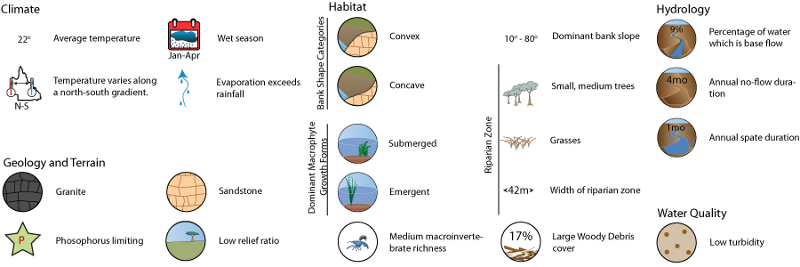|
|
Central Freshwater Biogeographic ProvinceCentral Freshwater Biogeographic Province – Geology and topography  Click on elements of the model or select from the tabs below GeologyThe geology of the FBP is quite diverse, volcanic and sandstone sediments occur frequently. In general the soils of the FBP have a low fertility the main exception to this is the Central Coast vegetation bioregion. The Australian Natural Resources Atlas[1] has more detailed geological descriptions about the various vegetation bioregions composing the Central FBP:
TerrainThe Central FBP has, on average, a low relief ratio, with a mean for the FBP of 0.02. High relief ratio areas are however spread throughout the FBP and predominate in coastal parts. Stream segment slope values are also on average low, with higher values corresponding to areas with high relief ratio values. Central FBP is dominated by the erosional flatness index class and erosional areas are spread throughout the FBP. Depositional valley bottom flat areas occur in the western Burdekin and central Fitzroy catchments. Only a small proportion of the FBP contains ridge top flat areas.
References
Last updated: 22 March 2013 This page should be cited as: Department of Environment, Science and Innovation, Queensland (2013) Central Freshwater Biogeographic Province – Geology and topography, WetlandInfo website, accessed 18 March 2024. Available at: https://wetlandinfo.des.qld.gov.au/wetlands/ecology/aquatic-ecosystems-natural/riverine/freshwater-biogeo/central/geology-topography.html |

 — Department of Environment, Science and Innovation
— Department of Environment, Science and Innovation

